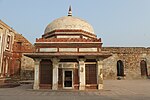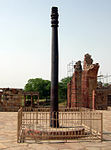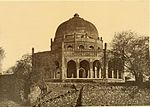Tomb of Balban

The Tomb of Ghiyas ud din Balban is located in Mehrauli, New Delhi, India. Built in circa 1287 CE in rubble masonry, the tomb is a building of historical importance in the development of Indo-Islamic architecture, as it was here that first Islamic arch made its appearance in India, and according to many, the first Islamic dome as well, which however hasn't survived, making Alai Darwaza built in 1311 CE, in the nearby Qutb complex, the earliest surviving dome in India. Ghiyas ud din Balban (1200–1287) was a Turkic ruler of the Delhi Sultanate during the rule of Mamluk dynasty of Delhi (or Slave dynasty) from 1266 to 1287. He was one of the most prominent rulers of the Slave Dynasty. The tomb of Balban was discovered in the mid-20th century.
Excerpt from the Wikipedia article Tomb of Balban (License: CC BY-SA 3.0, Authors, Images).Tomb of Balban
Bhulbhulaiya Road,
Geographical coordinates (GPS) Address Nearby Places Show on map
Geographical coordinates (GPS)
| Latitude | Longitude |
|---|---|
| N 28.519444444444 ° | E 77.188611111111 ° |
Address
Mehrauli Archeological Park
Bhulbhulaiya Road
110030
Delhi, India
Open on Google Maps










